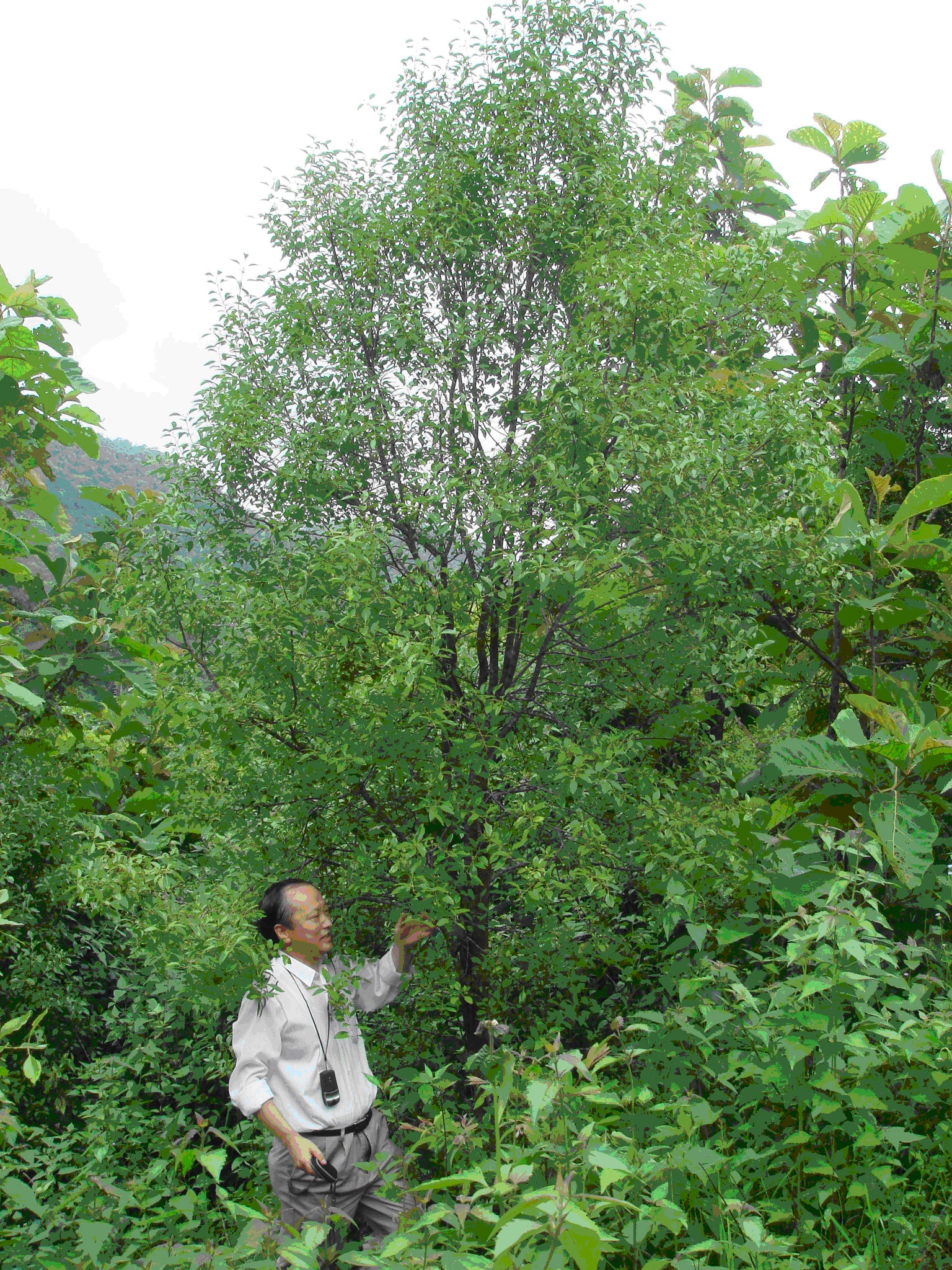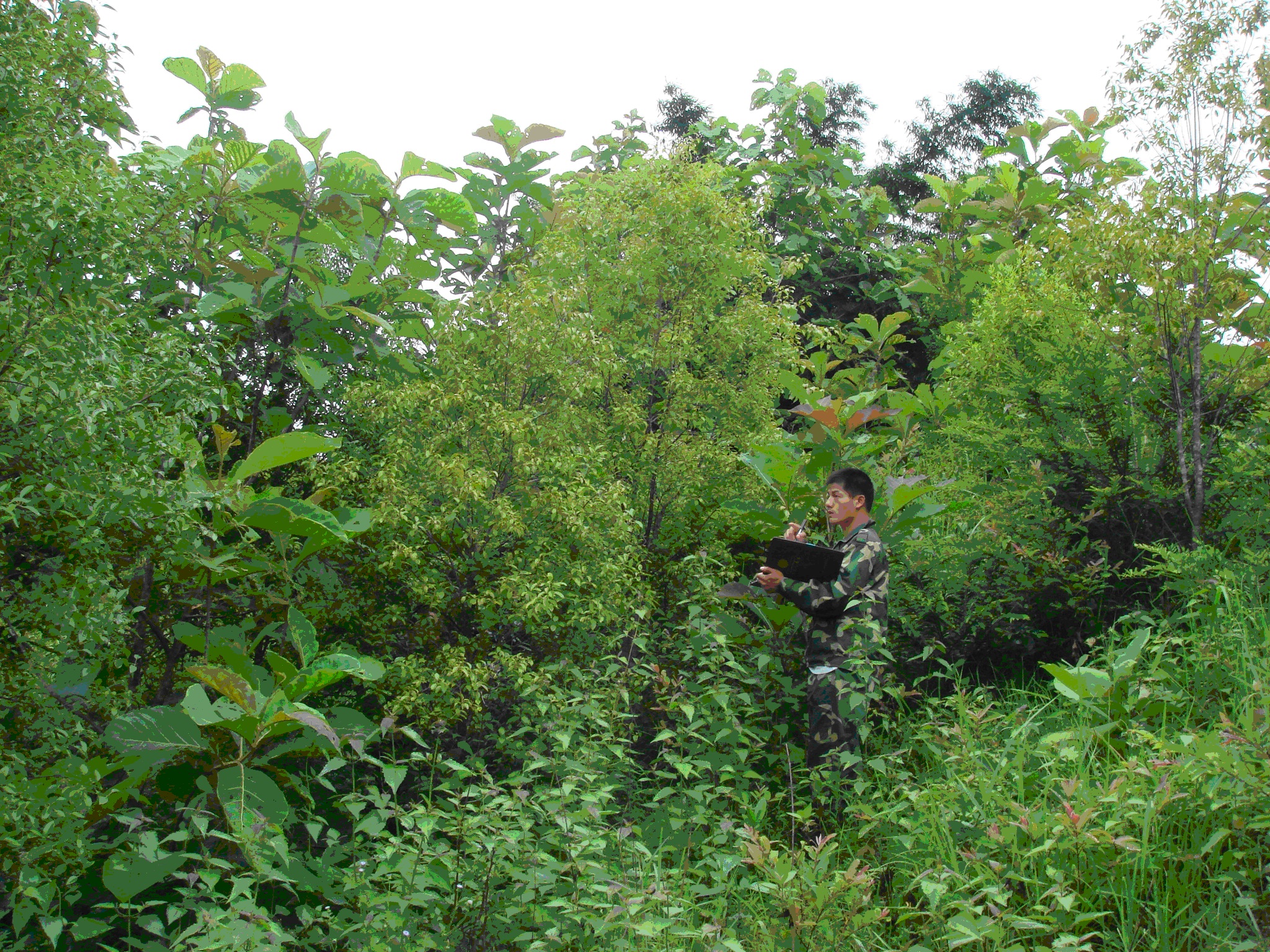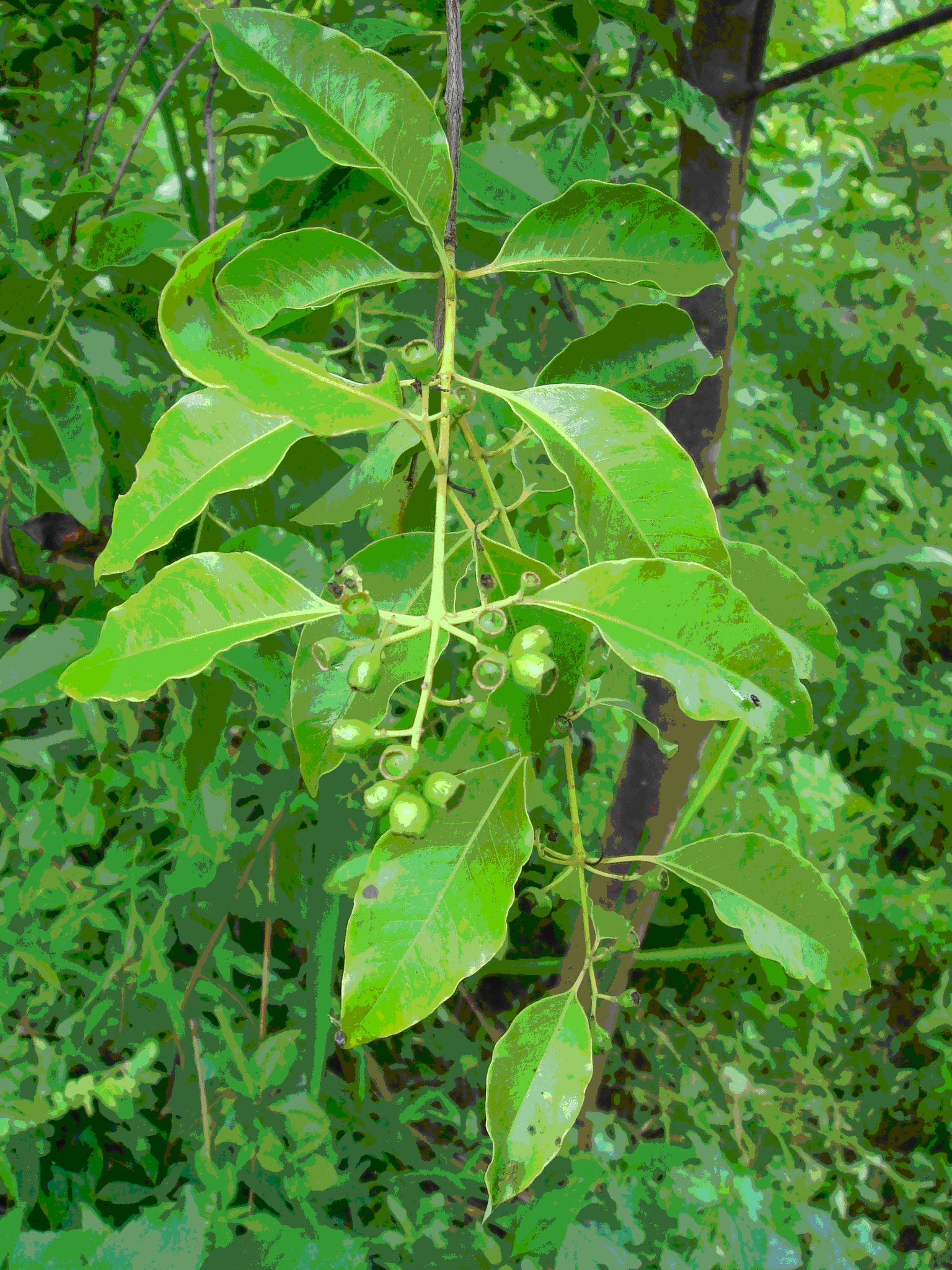Prof. Liu Wenyao and his research team of XTBG have paid considerable attention to the research into the biology and ecology of Indian sandalwood (Santalum album). They introduced seeds of Santalum album from Australia and conducted studies of flowering, fruiting, germination and early seedling growth of Santalum album. Afterwards, they carried out experiment on agroforestry cultivation of Santalum album with other economic plants like mango and teak. With a number of trees flowering and producing fruits, the experiment has been proved to be successful.
In response to vegetation restoration of degraded ecosystems, Prof. Liu Wenyao and his team cooperated with an enterprise of Pu’er city to conduct experiement of introduction and plantation of sandalwood on tropical degraded uplands. They found that Indian sandalwood has considerable potential to be used as an agroforestry tree species in degraded mountanious ecosystems. Commercialization of planting of sandalwood and nut yields would be possible.



Link:
Santalum album is a medium-sized evergreen tree with opposite, leathery leaves. It is found in tropical Asia through Australia to Hawaii. Like most species of the genus Santalum it is a root parasite, tapping the roots of other species for water and inorganic nutrients (the mistletoe, Viscum album, parasiting braches of different trees, is a relative). The wood of S. album is highly aromatic. The light sapwood is used for wood carvings, whereas the darker wood from the core is steam distilled, yielding the precious sandalwood oil. Bits and pieces are used for incense sticks, etc. One of the most famous sites of cultivation is Mysore in India. The trees must be 30 years before the oil production pays off.



